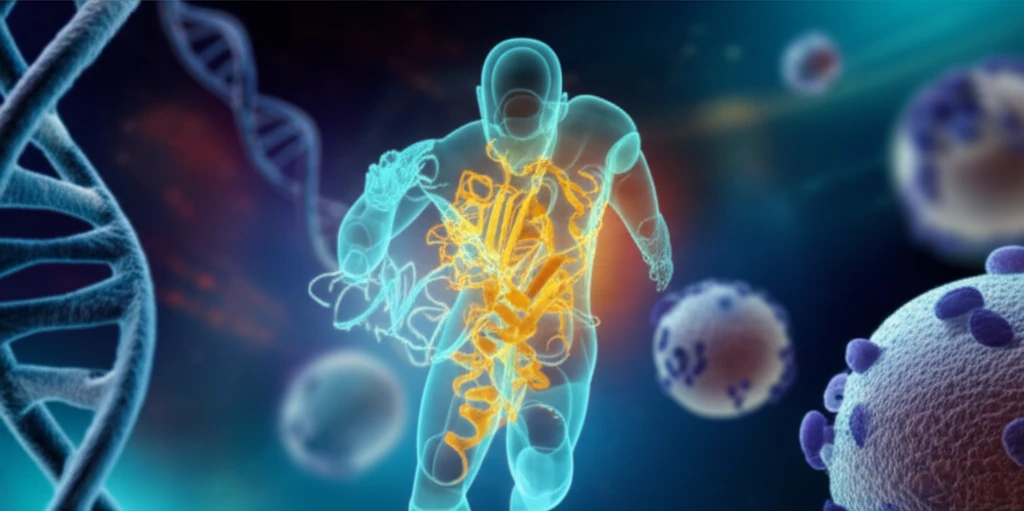
Decoding Cellular Stress: How SIRT7 Impacts Cancer and Aging
"Discover the role of SIRT7 in regulating cellular stress responses, potentially unlocking new avenues for cancer therapy and promoting healthy aging."
Our cells constantly face various stressors, from environmental toxins to the natural wear and tear of aging. Understanding how cells respond to these stresses is crucial for developing treatments for diseases like cancer and for promoting healthy aging. Sirtuins, a family of proteins, play a vital role in this cellular stress response, acting as guardians that help maintain cellular stability.
Among these sirtuins, SIRT7 has garnered significant attention for its unique function in the nucleolus, a structure within the cell's nucleus responsible for ribosome production. While other sirtuins have been extensively studied, SIRT7's specific role in managing cellular stress responses, particularly in relation to cancer and aging, is still being unraveled.
Recent research sheds light on SIRT7's involvement in regulating the CRL4 E3 ligase complex, a key player in protein degradation and cellular signaling. By understanding how SIRT7 interacts with and controls this complex, we can gain valuable insights into potential therapeutic targets for cancer and strategies for mitigating the effects of aging.
SIRT7's Role in Managing Cellular Stress: The CRL4 E3 Ligase Connection

The CRL4 E3 ubiquitin ligase complex acts like a cellular disposal system, tagging proteins for degradation. This process is crucial for maintaining cellular health and preventing the accumulation of damaged or unwanted proteins. The CRL4 complex consists of several proteins, including Cullin 4 (CUL4), which interacts with WD-40 proteins through an adaptor protein called DDB1.
- CRL4 Complex Assembly: Cullin 4 (CUL4) and ROC1 combine to form the E3 ubiquitin ligase complex.
- DDB1's Role: DDB1 acts as an adaptor protein, helping CUL4 target specific proteins for degradation.
- Acetylation Impact: Acetylation of DDB1 promotes its binding to CUL4, activating the CRL4 complex.
- SIRT7's Intervention: SIRT7 deacetylates DDB1, disrupting its interaction with CUL4 and suppressing CRL4 activity.
The Future of SIRT7 Research: Implications for Health and Longevity
The discovery of SIRT7's role in regulating the CRL4 E3 ligase complex opens up new avenues for therapeutic interventions. By targeting SIRT7, researchers may be able to develop novel cancer therapies that promote apoptosis in tumor cells. Furthermore, understanding how SIRT7 manages cellular stress could lead to strategies for mitigating age-related diseases and promoting healthy aging. Further research is needed to fully elucidate the mechanisms by which SIRT7 exerts its effects, but the potential benefits for human health are immense.
